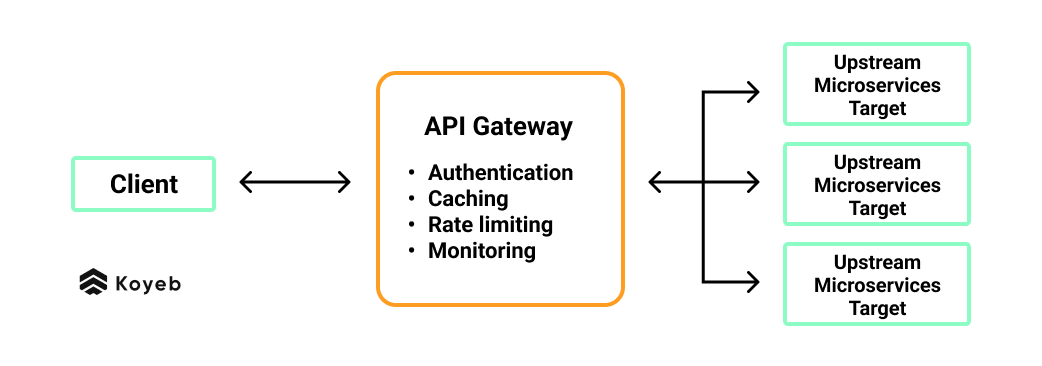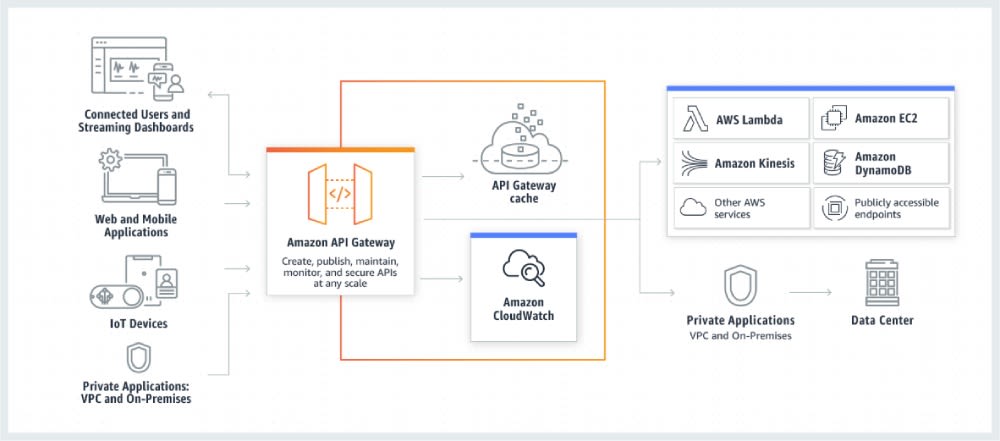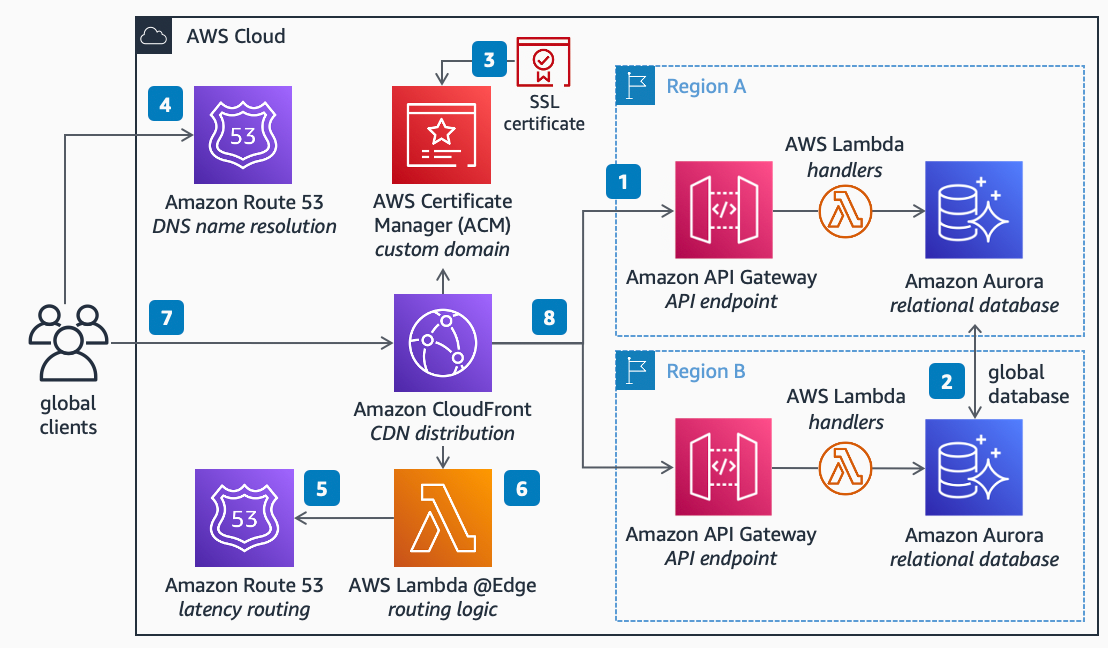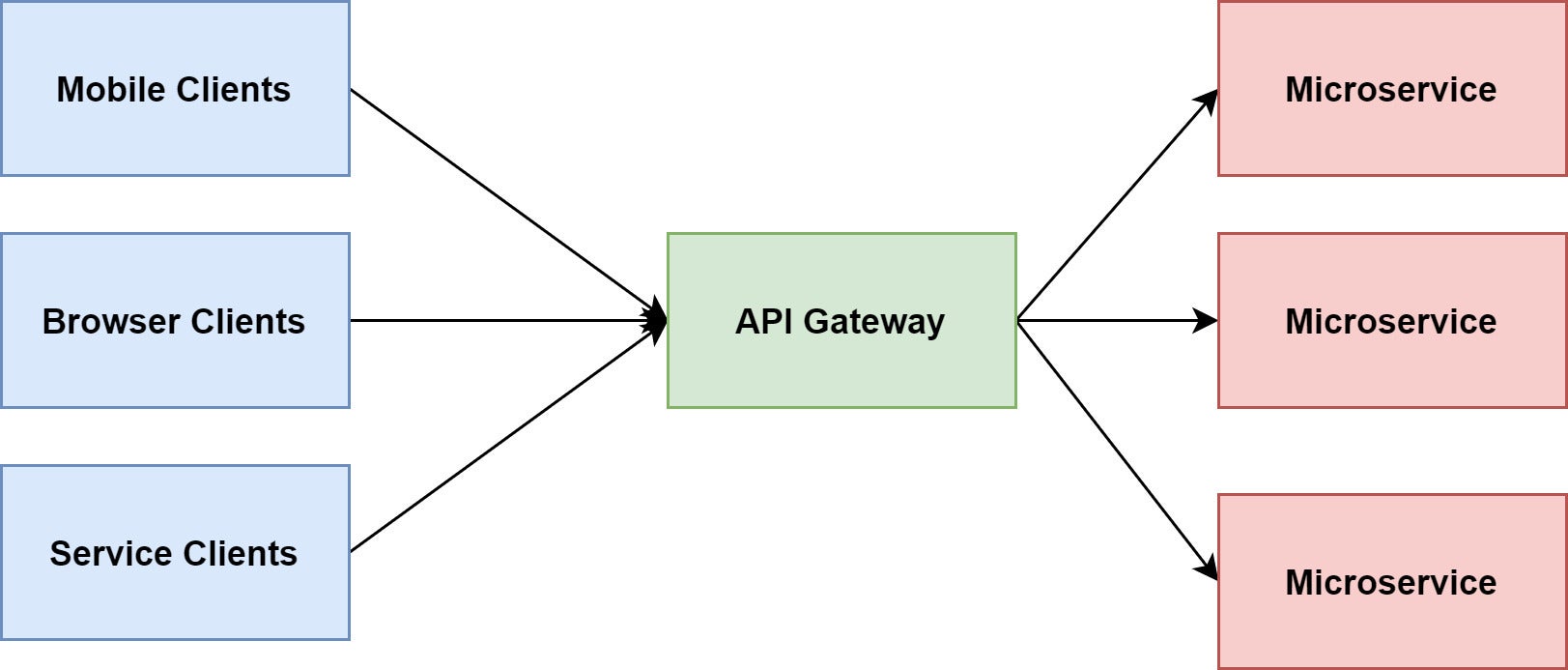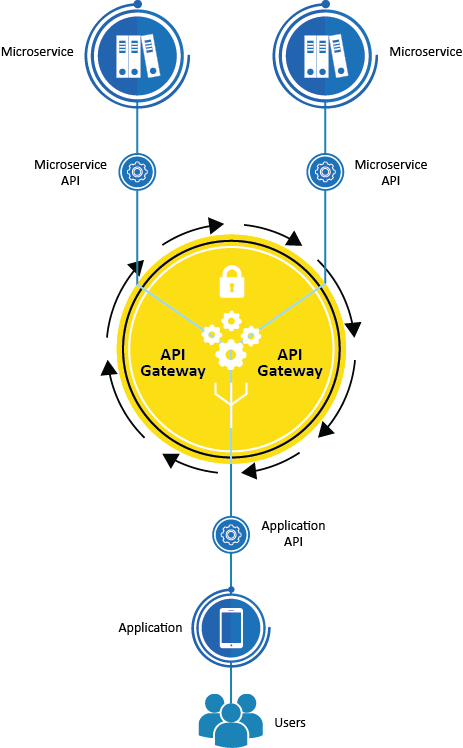What are API Gateway Limits?
API Gateway limits are predefined thresholds that manage the number of requests and resources consumed by an API Gateway. These limits help ensure fair usage, maintain system stability, and prevent potential abuse. Exceeding API Gateway limits can lead to various consequences, including reduced performance, service disruptions, or even account suspension, depending on the provider’s policies. API Gateway limitations typically encompass request rate, concurrent connections, and data transfer. Request rate limits control the number of requests an API can handle within a specific timeframe, while concurrent connections restrict the number of simultaneous requests. Data transfer limitations, on the other hand, govern the amount of data that can be exchanged between the API Gateway and its clients.
Understanding and managing API Gateway limitations is crucial for developers and organizations that rely on APIs for their applications and services. By adhering to these limits, you can maintain optimal API performance, minimize the risk of service interruptions, and ensure a positive user experience.
Common API Gateway Limitations and Their Implications
API Gateway limitations are essential for maintaining the stability and performance of APIs. Developers and organizations should be aware of these limitations to ensure optimal API usage and avoid potential issues. Here are some common API Gateway limitations and their implications:
Request Rate
Request rate limits control the number of requests an API can handle within a specific timeframe. Exceeding the request rate limit can lead to reduced performance, increased latency, or even service disruptions. To mitigate this, developers can implement techniques such as request batching, which combines multiple requests into a single one, or request throttling, which regulates the rate of requests sent to the API.
Concurrent Connections
Concurrent connections refer to the number of simultaneous requests an API can process. Limiting concurrent connections helps prevent overloading the API Gateway and ensures consistent performance. Developers can optimize concurrent connections by implementing connection pooling, which reuses existing connections instead of establishing new ones for each request.
Data Transfer
Data transfer limitations govern the amount of data exchanged between the API Gateway and its clients. Exceeding data transfer limits can result in additional charges or service restrictions. To avoid this, developers can employ data compression, caching, or data reduction techniques to minimize the amount of data transferred.
Bandwidth
Bandwidth limitations control the rate at which data can be transmitted between the API Gateway and its clients. Exceeding bandwidth limits can lead to slower API response times and increased costs. Developers can optimize bandwidth usage by implementing data compression, using efficient data formats, or employing content delivery networks (CDNs) to distribute data more efficiently.
Memory
Memory limitations restrict the amount of memory an API Gateway can allocate for processing requests. Exceeding memory limits can cause the API Gateway to crash or become unresponsive. Developers can optimize memory usage by implementing efficient data processing algorithms, using lightweight data structures, or offloading heavy computations to external services.
By understanding these common API Gateway limitations and their implications, developers can design and manage APIs more effectively, ensuring optimal performance, reliability, and cost-efficiency.
How to Monitor and Track API Gateway Limits
Monitoring and tracking API Gateway limits is crucial for maintaining optimal API performance and reliability. By keeping a close eye on these limits, developers can identify potential issues before they become critical and take proactive measures to prevent exceeding the limits. Here are some ways to monitor and track API Gateway limits:
Built-in Monitoring Tools
Many API Gateway providers offer built-in monitoring tools that allow developers to track various metrics related to API usage, such as request rate, error rate, and latency. These tools often provide real-time alerts when usage approaches or exceeds predefined thresholds, enabling developers to take prompt action.
Third-Party Monitoring Services
Third-party monitoring services can provide additional insights into API Gateway usage and performance. These services often offer more advanced features, such as customizable dashboards, historical data analysis, and integration with other monitoring tools. When selecting a third-party monitoring service, consider factors such as compatibility with your API Gateway provider, pricing, and feature set.
Custom Monitoring Solutions
For more advanced use cases, developers can create custom monitoring solutions using various tools and techniques, such as log analysis, metrics visualization, and automated alerting. Custom monitoring solutions can be tailored to specific requirements and integrated with existing DevOps workflows.
Setting Up Alerts and Notifications
Regardless of the monitoring approach, setting up alerts and notifications is essential for staying informed about API Gateway usage and potential issues. Most monitoring tools allow developers to define custom alerts based on specific metrics and thresholds. These alerts can be delivered via email, SMS, or other communication channels, ensuring that the right people are notified at the right time.
Regularly Reviewing API Usage
Lastly, regularly reviewing API usage data can help developers identify trends, optimize API performance, and avoid potential issues. By analyzing usage patterns, developers can adjust API Gateway limits as needed, implement rate limiting or traffic shaping strategies, and ensure that their APIs are designed to handle current and future usage requirements.
By effectively monitoring and tracking API Gateway limits, developers can maintain optimal API performance, ensure reliability, and avoid potential issues related to exceeding the limits.
Strategies for Optimizing API Gateway Utilization
Optimizing API Gateway utilization is essential for maintaining high performance, reducing costs, and ensuring a positive user experience. Here are several strategies for optimizing API Gateway utilization:
Request Batching
Request batching combines multiple API requests into a single one, reducing the number of individual requests and improving overall efficiency. This technique can be particularly useful in scenarios where multiple API calls are required to complete a single task or when dealing with high-frequency, low-latency APIs.
Caching
Caching is a powerful technique for improving API performance and reducing the load on the API Gateway. By storing frequently accessed data in memory, caching can significantly reduce the number of requests that need to be processed by the API Gateway, leading to faster response times and lower costs.
Connection Pooling
Connection pooling is a strategy for managing and reusing connections between the API Gateway and its clients. By maintaining a pool of pre-established connections, connection pooling can reduce the overhead associated with establishing and tearing down connections, improving overall efficiency and reducing latency.
Data Compression
Data compression can help reduce the amount of data transferred between the API Gateway and its clients, leading to faster response times and lower costs. By compressing data before sending it and decompressing it upon receipt, developers can minimize the impact of data transfer limitations and improve overall API performance.
Load Balancing
Load balancing distributes API requests across multiple instances of the API Gateway, ensuring that no single instance is overwhelmed and improving overall reliability. By balancing the load across multiple instances, developers can ensure that their APIs can handle high traffic volumes and maintain consistent performance.
Traffic Shaping
Traffic shaping is a technique for controlling the rate at which API requests are sent to the API Gateway. By regulating the rate of requests, developers can prevent overloading the API Gateway and ensure consistent performance, even in scenarios with high traffic volumes.
API Gateway Proxies
Using an API Gateway proxy can help offload some of the processing and management tasks from the API Gateway itself, improving overall efficiency and reducing costs. API Gateway proxies can handle tasks such as request routing, authentication, and rate limiting, freeing up resources on the API Gateway for more critical tasks.
By implementing these strategies for optimizing API Gateway utilization, developers can ensure that their APIs are performing at their best, reduce costs, and provide a positive user experience.
How to Handle Exceeded API Gateway Limits
Exceeding API Gateway limits can result in various issues, such as reduced performance, increased costs, and even service disruptions. To handle exceeded API Gateway limits effectively, consider implementing the following strategies:
Error Handling
Implementing robust error handling can help ensure that your application can gracefully handle situations where API Gateway limits are exceeded. By catching and handling exceptions related to API Gateway limits, you can prevent your application from crashing and provide a better user experience.
Retries and Backoff Strategies
Retries and backoff strategies can help ensure that your application can recover from situations where API Gateway limits are exceeded. By automatically retrying requests after a short delay, you can increase the chances of success while avoiding overwhelming the API Gateway. Implementing an exponential backoff strategy can further reduce the risk of overloading the API Gateway and improve overall reliability.
Rate Limiting
Implementing rate limiting on your application’s side can help prevent exceeding API Gateway limits. By limiting the rate of requests sent to the API Gateway, you can ensure that you stay within the defined limits and avoid potential issues. Rate limiting can also help improve overall performance and reduce costs by reducing the number of unnecessary requests.
Load Balancing and Traffic Shaping
Load balancing and traffic shaping can help distribute API requests across multiple instances of the API Gateway, ensuring that no single instance is overwhelmed. By balancing the load and shaping traffic, you can prevent overloading the API Gateway and ensure consistent performance, even in scenarios with high traffic volumes.
Monitoring and Alerting
Monitoring and alerting can help you stay informed about API Gateway usage and potential issues. By setting up alerts based on specific metrics and thresholds, you can ensure that you are notified promptly when usage approaches or exceeds predefined limits. This can help you take proactive measures to prevent exceeding API Gateway limits and ensure optimal performance and reliability.
By implementing these strategies for handling exceeded API Gateway limits, you can ensure that your application can recover from potential issues and maintain consistent performance, even in scenarios with high traffic volumes.
Comparing API Gateway Limitations Across Popular Providers
When selecting an API Gateway provider, it’s essential to consider the limitations and constraints associated with each platform. Here’s a comparison of API Gateway limitations across popular providers, highlighting key differences and considerations:
AWS API Gateway
AWS API Gateway has several limitations, including a maximum of 10,000 API calls per second for a single API, a maximum of 1,000 concurrent connections, and a maximum data transfer limit of 10 GB per second. Additionally, AWS API Gateway charges based on the number of API calls, data transfer, and other factors, making it essential to monitor and optimize usage to minimize costs.
Azure API Management
Azure API Management has different limitations, including a maximum of 5,000 API calls per second for a single API, a maximum of 2,000 concurrent connections, and a maximum data transfer limit of 5 GB per second. Azure API Management also charges based on the number of API calls, data transfer, and other factors, making it essential to monitor and optimize usage to minimize costs.
Google Cloud API Gateway
Google Cloud API Gateway has different limitations, including a maximum of 1,000 API calls per second for a single API, a maximum of 1,000 concurrent connections, and a maximum data transfer limit of 1 GB per second. Google Cloud API Gateway charges based on the number of API calls, data transfer, and other factors, making it essential to monitor and optimize usage to minimize costs.
Key Differences and Considerations
When comparing API Gateway limitations across popular providers, it’s essential to consider the following factors:
- Request rate: The maximum number of API calls per second that can be handled by a single API.
- Concurrent connections: The maximum number of simultaneous connections that can be established to the API Gateway.
- Data transfer: The maximum amount of data that can be transferred through the API Gateway per second.
- Cost: The pricing model and associated costs for each provider, including charges for API calls, data transfer, and other factors.
By comparing API Gateway limitations across popular providers, you can make an informed decision about which platform is best suited for your needs, taking into account factors such as performance, reliability, and cost.
Best Practices for Designing APIs with Limitations in Mind
Designing APIs that take API Gateway limitations into account is essential for ensuring optimal performance, reliability, and cost-effectiveness. Here are some best practices for designing APIs that consider API Gateway limitations:
Rate Limiting
Implementing rate limiting on the API server can help prevent exceeding API Gateway limits. By limiting the number of requests that can be sent to the API Gateway within a specific time frame, you can ensure that you stay within the defined limits and avoid potential issues.
Traffic Shaping
Traffic shaping involves controlling the rate at which requests are sent to the API Gateway. By smoothing out traffic spikes and ensuring a consistent rate of requests, you can prevent overloading the API Gateway and ensure consistent performance.
Load Balancing
Load balancing involves distributing API requests across multiple instances of the API Gateway. By balancing the load, you can prevent overloading any single instance and ensure consistent performance, even in scenarios with high traffic volumes.
Caching
Caching involves storing frequently accessed data in memory, reducing the number of requests that need to be sent to the API Gateway. By caching data, you can improve performance, reduce costs, and prevent overloading the API Gateway.
Connection Pooling
Connection pooling involves reusing existing connections instead of creating new ones for each request. By reusing connections, you can reduce the overhead associated with establishing and tearing down connections, improving performance and reducing costs.
API Design
Designing APIs that consider API Gateway limitations involves creating APIs that are efficient, scalable, and reliable. This includes designing APIs with a small surface area, minimizing the number of requests required to complete a task, and ensuring that APIs are designed to handle high traffic volumes.
Monitoring and Alerting
Monitoring and alerting are essential for ensuring that you are aware of potential issues and can take proactive measures to prevent exceeding API Gateway limits. By setting up alerts based on specific metrics and thresholds, you can ensure that you are notified promptly when usage approaches or exceeds predefined limits.
By following these best practices for designing APIs that take API Gateway limitations into account, you can ensure that your APIs are efficient, scalable, and reliable, even in scenarios with high traffic volumes.
Future Trends and Considerations for API Gateway Limitations
As technology continues to evolve, API Gateway limitations will continue to change and adapt. Here are some future trends and considerations for API Gateway limitations that developers should keep in mind:
Emerging Technologies
Emerging technologies, such as 5G, edge computing, and the Internet of Things (IoT), will significantly impact API Gateway limitations. As these technologies become more prevalent, API Gateways will need to be able to handle higher request rates, more concurrent connections, and larger data transfers. Developers will need to consider these limitations when designing APIs for these emerging technologies.
Evolving Industry Standards
Evolving industry standards, such as OpenAPI and gRPC, will also impact API Gateway limitations. As these standards become more widely adopted, API Gateways will need to be able to handle requests in these formats. Developers will need to consider these limitations when designing APIs that use these standards.
Scalability
Scalability will continue to be a critical consideration for API Gateway limitations. As more applications move to the cloud and traffic volumes continue to increase, API Gateways will need to be able to scale to meet these demands. Developers will need to consider scalability when designing APIs and selecting API Gateway providers.
Security
Security will also continue to be a critical consideration for API Gateway limitations. As APIs become more prevalent, they will become increasingly attractive targets for cyber attacks. Developers will need to consider security when designing APIs and selecting API Gateway providers. This includes implementing authentication, authorization, and encryption to protect sensitive data.
Cost
Cost will continue to be a critical consideration for API Gateway limitations. As traffic volumes increase and more applications move to the cloud, the cost of API Gateway services will also increase. Developers will need to consider cost when designing APIs and selecting API Gateway providers. This includes selecting providers that offer flexible pricing models and optimizing API utilization to minimize costs.
Innovation
Innovation will continue to be a critical consideration for API Gateway limitations. As new technologies and industry standards emerge, API Gateways will need to be able to adapt and evolve to meet these changing demands. Developers will need to consider innovation when designing APIs and selecting API Gateway providers. This includes selecting providers that offer innovative features and are committed to ongoing development and improvement.
By considering these future trends and considerations for API Gateway limitations, developers can ensure that their APIs are designed to meet the changing demands of technology and industry standards. This will help ensure that APIs are efficient, scalable, and reliable, even in scenarios with high traffic volumes and emerging technologies.

